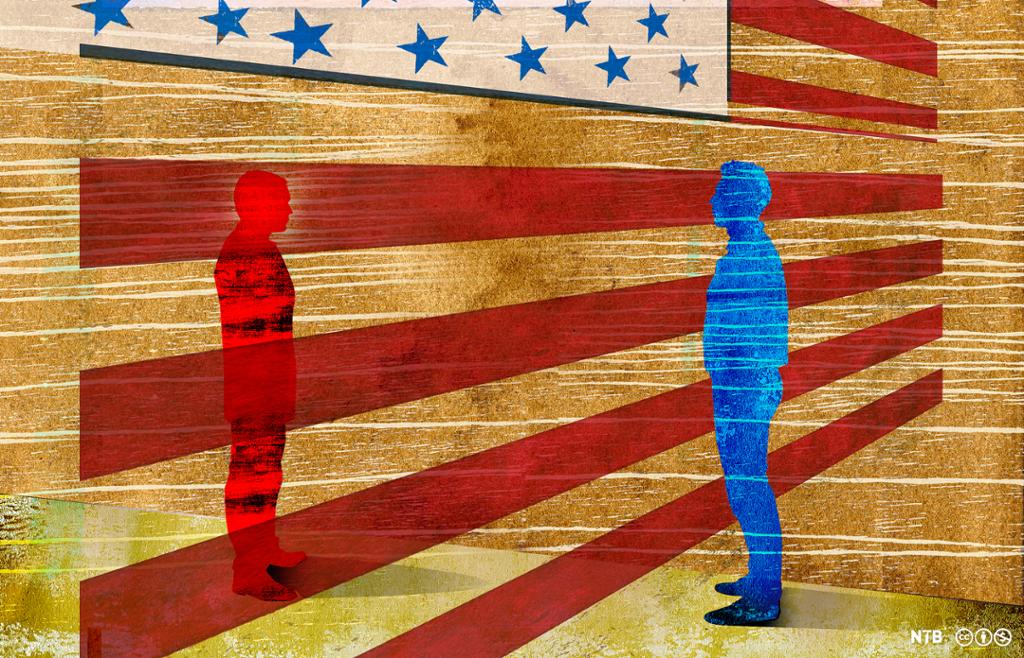Is Gerrymandering Undermining Democracy in the United States?

Gerrymandering is the act of drawing the borders of an electoral district in such a way that it gives someone an advantage in an election. In the US it is possible to find examples of gerrymandering in both state and federal elections. These are typically partisan gerrymandering: drawing electoral district in a way that is to the advantage of either the Democratic or the Republican party.
Historically, a central motivation for gerrymandering was to prevent African Americans from having influence and representation. Redistricting based on the criteria of race is no longer legal.
How is it possible to affect voting results by changing the borders of the electoral district? Let's try to illustrate the principle using simple numbers. Imagine that there are 60 voters who want to vote blue and 90 who want to vote red. If these are divided into three districts evenly, the red party would win three seats –there would be 20 blue voters and 30 red voters in each district. But if we readjust the districts and gather 50 red voters in one district, and 30 blue voters and 20 red voters in the other two districts, we suddenly get two representatives for the blue party, and just one for the red.
Let's have a look at how this could affect elections on the federal level: One person is sent from each electoral district to the House of Representatives, so in the second example, the red party with its 90 voters would get just one Congressperson, while the blue party with 60 voters would get two. When it comes to electing candidates for the Senate or for president, it would be the person who wins the most districts in the state who would gain power. In the second example, the blue party’s 60 voters would win and be represented by the senator or the president, while the 90 red party voters, even though they are a majority, would get no representation at all.
Research shows that over the past few decades, voters have tended to settle in areas where they find others who share their values and their politics. This makes it easier for the politicians in power to predict how communities will vote, and to either collect their opposition's voters into a single district (a practice called packing), or to spread them out into different districts (a practice called cracking).
Below, you will find an illustration of how 50 precincts can be divided into electoral districts in ways that would skew the outcome of an election.
The alternative to gerrymandering is to draw electoral districts with the intention of ensuring proportionate representation. In the box below you can see how the 50 precincts can be turned into districts in a way that would ensure a fair result.
When voters use the internet, they leave behind a myriad of clues about themselves. These data can be collected, sold, and exploited. If the people drawing the electoral districts have access to this kind of voter data, it is possible to predict with great accuracy how a person or group of people will vote.
Redistricting is intended to take place every ten years, after a census. Historically, there could be great changes in settlement in the US depending on the opportunities found in various places, and we still see that Americans on average change jobs and move about twice as often as Europeans do. To ensure fair representation, it is important that the districts reflect how many people live there.
When the issue of partisan gerrymandering was tried before the Supreme Court in 2019, the court stated that redistricting based on political allegiance is a political issue, not a legal issue.
One solution to stop gerrymandering is to take power away from self-interested politicians and leave redistricting to independent commissions. However, creating fair districts remains a challenge because Democrats tend to live in urban areas, while Republicans tend to live in suburbs and rural areas. These areas are geographically distant, so it has been challenging to place these voters in the same electoral districts.
A solution may be to make the voting districts larger. This would result in a more diverse electorate. Another suggestion has been to dictate what shape electoral districts can have: if a voting district looks like a turtle, a tapeworm, or a salamander, it is obvious that someone has tried to be creative. It has also been proposed that Congress should punish states that allow gerrymandering by not allowing their representatives to serve in Congress.
By making predictions about how people will vote based on factors such as income, ethnicity, education, etc. and placing them in electoral districts based on those predictions, it is possible to ensure a landslide victory for one party over another. If this succeeds, it undermines democracy, because many voters will not get political influence or be represented.
Democracy is based on the principle 'one person, one vote'. However, the question is: Is it possible to create a system that ensures that every vote counts the same in an election?
Relatert innhold
Tasks related to the article about gerrymandering in the United States of America.